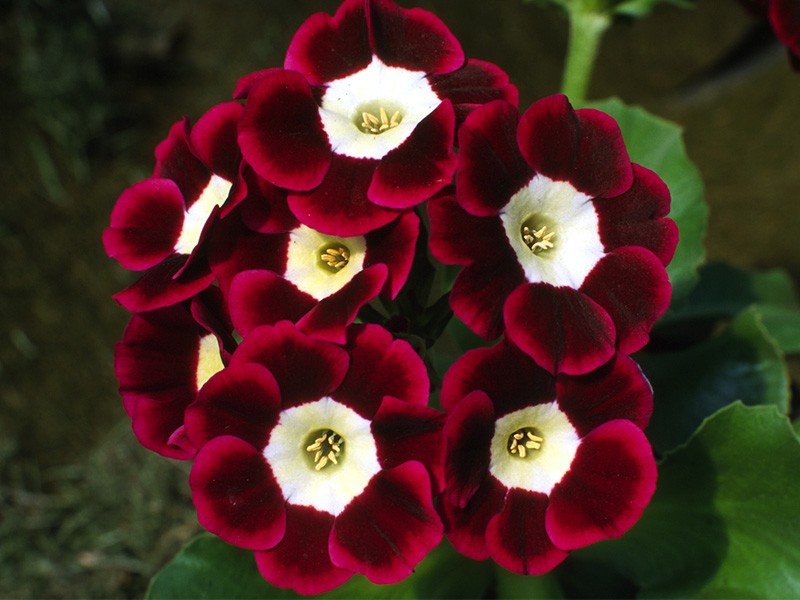
But we are very careful when we water the primroses. We don't do that, instead using the same commercial potting soil that we grow all of our other plants in. Information on growing auriculas often mentions adding grit to their soil to encourage the soil to drain quickly and dry out faster. If you water the plant anyhow, and the soil never has a chance to dry out, the roots may start to rot. If the soil is moist, the leaves are wilting just because of how hot it is and not because the roots are dry. If you think you need to water the plant because you see the wilted leaves, you should check the soil first before watering the plant. During a hot summer day, their leaves may wilt, even when their soil is moist. If they don't dry out somewhat between waterings, the roots may start to rot. In our experience, they withstand being too dry better than they do to being kept too wet. Although the primroses can be grown either in the ground or in pots, one big advantage to growing them in pots is that you can more easily control how wet or dry their soil is. The soil that we use is important, however we believe that how the plants are watered is even more important. It's a good quality of potting soil from the company, Sunshine/Sun Gro. The soil we use for growing our auricula primroses, is the same soil that we use for all of the other plants that we grow. One reason is that they don't like hot, humid summer weather, since they're originally from the mountainous regions in Europe where the summer temperatures cool off a lot at night.

Our thoughts on growing Primula pubescens and Primula marginata Auricula primroses can be a challenge for anyone to grow.

Diagram and information are courtesy of .uk.

This is then ideally placed to be transferred onto the stigma of the next pin-eyed flower which it visits. If the butterfly first visits a thrum-eyed flower, pollen is wiped off onto the top of its proboscis as it searches for nectar. If it then goes to visit a thrum-eyed flower, the pollen is perfectly positioned to be wiped off on the stigma, in this case, halfway down the flower tube. An insect such as a Brimstone butterfly (Gonepteryx rhamni), visiting a pin-eyed flower, gets pollen stuck to the middle of its proboscis from the anthers half-way down the flower tube. This means that only long-tongued insects can actually reach the nectar in the base. Insects visit the flowers in search of nectar, which is located at the bottom of the flower tube. Different types of primrose flowersOn the left in the picture - a diagram of a pin-eyed flower,Ĭut from top to bottom (longitudinal cross section), and on the right - a diagram of a thrum-eyed flower, cut from top to bottom.


 0 kommentar(er)
0 kommentar(er)
